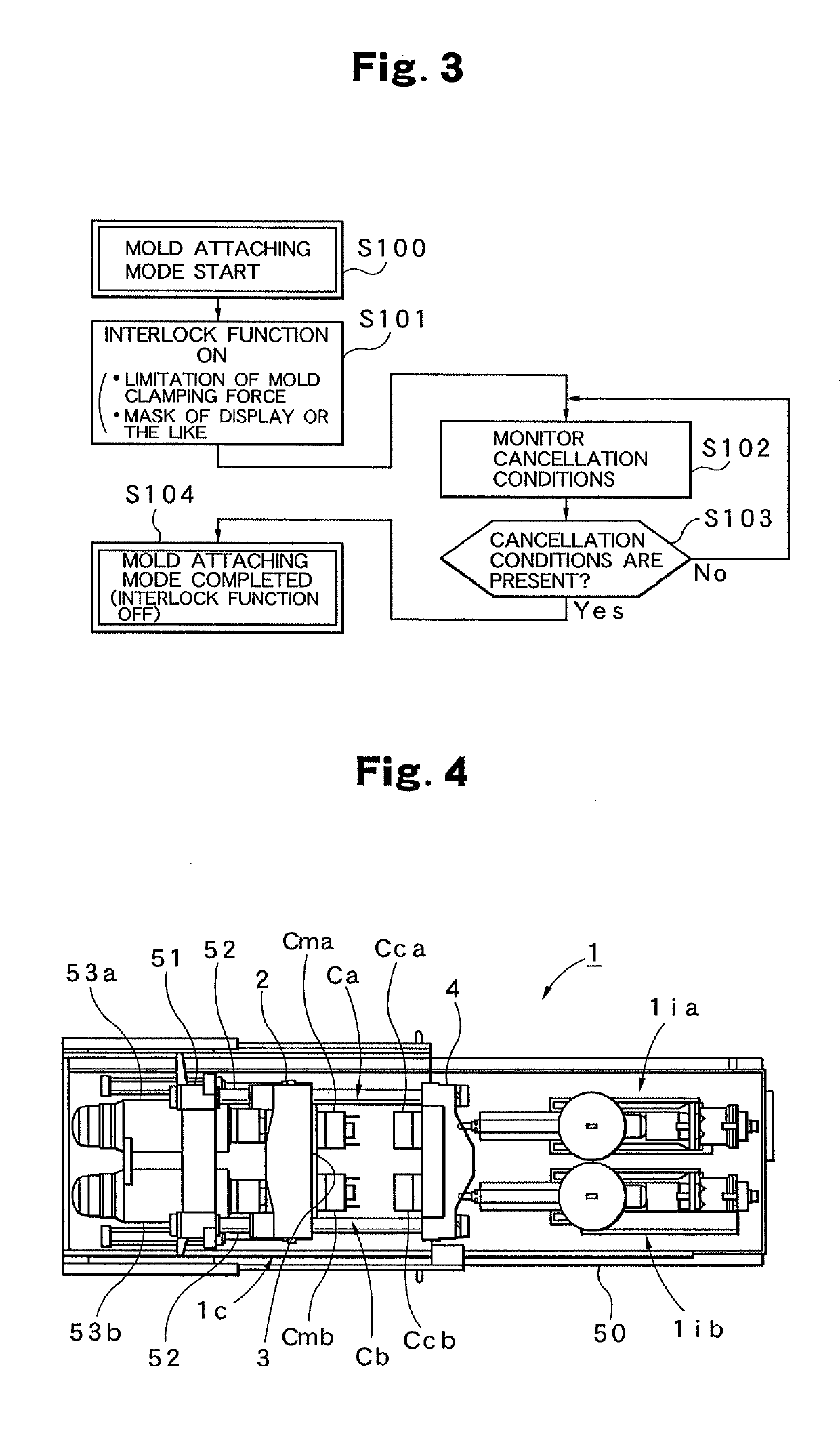Mold attaching method to mold clamping device
a mold and clamping device technology, applied in the field of mold clamping devices, can solve the problems of not being able to easily adjust the position of molds, not being able to achieve automation, and not being able to say that the attaching operation is facilitated, so as to prevent the breakage or damage of molds and the mold clamping device, reduce the cost of facilities, and remove the application of unnecessary stress
- Summary
- Abstract
- Description
- Claims
- Application Information
AI Technical Summary
Benefits of technology
Problems solved by technology
Method used
Image
Examples
Embodiment Construction
[0030]A preferred embodiment according to this invention will then be described in detail with reference to drawings. The accompanying drawings are not intended to specify this invention but are intended to facilitate the understanding of this invention. Detailed description of known parts will be omitted so that the invention is prevented from being unclear.
[0031]A schematic configuration of a two-color molding injection molding machine 1 in which a mold attaching method according to this embodiment is preferably used will first be described with reference to FIGS. 4 and 5.
[0032]As shown in FIG. 4, the two-color molding injection molding machine 1 includes a mold clamping device 1c that is placed on a machine base 50 and injection devices 1ia and 1ib that are placed so as to be aligned from left to right. FIG. 4 shows an external appearance of the injection molding machine 1 in plan view. The mold clamping device 1c includes a fixed platen 4 that is fixed in the middle of the machi...
PUM
| Property | Measurement | Unit |
|---|---|---|
| weight | aaaaa | aaaaa |
| rotation | aaaaa | aaaaa |
| angle | aaaaa | aaaaa |
Abstract
Description
Claims
Application Information
 Login to View More
Login to View More - R&D
- Intellectual Property
- Life Sciences
- Materials
- Tech Scout
- Unparalleled Data Quality
- Higher Quality Content
- 60% Fewer Hallucinations
Browse by: Latest US Patents, China's latest patents, Technical Efficacy Thesaurus, Application Domain, Technology Topic, Popular Technical Reports.
© 2025 PatSnap. All rights reserved.Legal|Privacy policy|Modern Slavery Act Transparency Statement|Sitemap|About US| Contact US: help@patsnap.com



